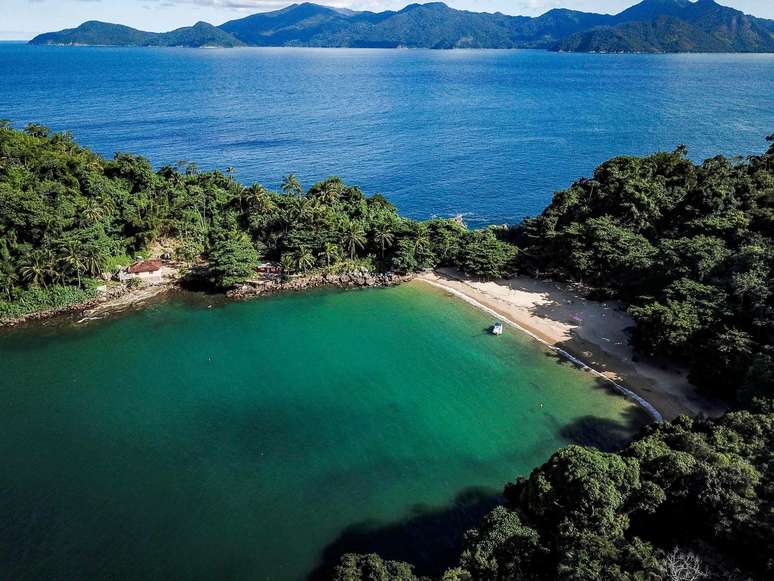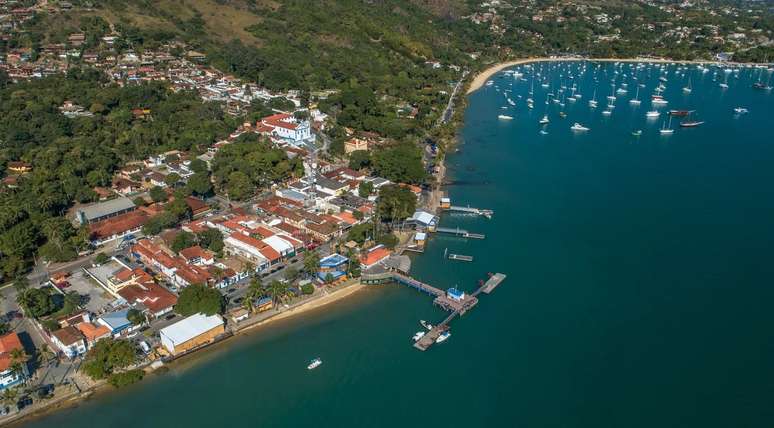The Brazilian sailing capital has around 42 beaches […]
If perfect tubes have made Ubatuba the national capital of surfing, it’s the winds that will take you to your next stop: Ilhabela, the Brazilian capital of sailing.
An obligatory destination for the best sailors in the world and address for those who have left the mainland to live on a sailing boat, the destination is the coast of São Paulo, where the Atlantic Forest touches the sea, forming a green belt, surrounded by isolated beaches of exaggerated bluish.
And all this, just 210 kilometers from the capital.
Ilhabela is shown. There are around 42 sand strips there and 84% of its total area is made up of pristine Atlantic Forest.
The lives of residents pass daily through Perequê, an 820 meter long beach, near the commercial center of the island. It is from there that the road continues towards the last beaches accessible by road: Veloso, to the south, and Jabaquara, 17 km north of the historic centre.
But sailing in Ilhabela means being able to go to destinations where cars can’t reach.
To the north of the island, a series of isolated beaches overlook the sea and, due to the difficulty of access, rarely visited, such as Fome, a discreet 122 meter long stretch of sand which is home to a colonial villa.
Another stop is Poço which, as if the color of the sea wasn’t enough, also has a waterfall that forms a natural pool, right on the beach.

Unlike the sheltered bays of Paraty and Angra dos Reis, protected by the Ilha Grande in the background, sailing on the north coast of São Paulo means sailing in unprotected waters with better wind conditions for travelers with more sailing miles, accustomed to the sea oscillation.
For quiet nights, therefore, it is necessary to choose an anchor point in more sheltered areas, such as the pockets of Sombrio and Eustáquio, a tiny beach 150 meters long.
It is in these small inlets with calm waters that the journey slows down, the winds give respite and that rough sea transforms into an infinity pool, where it is possible to snorkel, practice Stand Up Paddle and even take a small path in the Eustachian River with a unique view from Castelhanos Bay, address of the largest beach in the archipelago, almost 2 km long.
WATCH THE VIDEO
Ilhabela from the afterlife
Those lands so close and, at the same time, so far from the mainland are fertile territory for the creation of stories that give other tones to the journey, such as Praia da Caveira, in the eastern part of the island, whose legend has it that today, in 1916 , the bodies of the steamship Príncipe de Asturias which sank, 12 km to the south, in Ponta de Pirabura, would have been brought there.
The ship became known as the Brazilian Titanic, due to the number of dead who, even today, are said to be muttering and dragging chains on the beach.
For the rest, let the winds choose your next stop.
* Trip carried out with the support of Wind Charter (windcharter.com.br)
Source: Terra
Ben Stock is a lifestyle journalist and author at Gossipify. He writes about topics such as health, wellness, travel, food and home decor. He provides practical advice and inspiration to improve well-being, keeps readers up to date with latest lifestyle news and trends, known for his engaging writing style, in-depth analysis and unique perspectives.







